How You Should Choose The Right Keyboard Without Wasting Time and Money
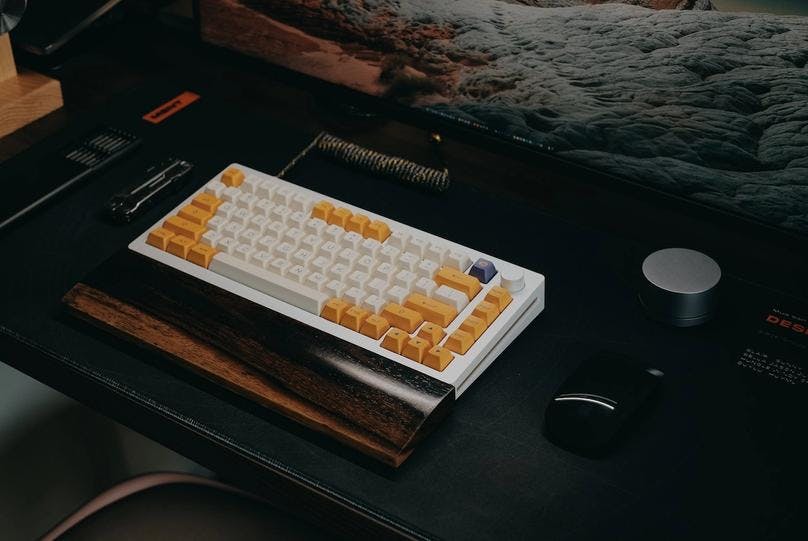
Don't take the risk of buying a computer keyboard without knowing how to choose the right keyboard that suits you the most. Whether you are a new computer user or a regular user who is searching for a comfortable keyboard that suits you the best, you are in the perfect place.
We feel your pain point of using an uncomfortable and inefficient keyboard. Typing should be seamless and enjoyable, right? That's why Typing Mentor is here to help you overcome this annoying situation. Look no further! In this article, we explore the importance of choosing the right keyboard and provide a comprehensive overview of key factors to consider with a complete checklist.
A keyboard directly impacts productivity, comfort, and overall typing experience. Whether you're a writer or a gamer or spend hours typing daily, finding the perfect keyboard is paramount. With countless options available, it's easy to feel overwhelmed. No worries! This guide walks you through crucial factors, ensuring an informed decision.
By the end, you can choose a keyboard by yourself that exceeds expectations. Let's dive into the checklist...
#1 Knowing Your Typing Needs
When it comes to choosing the right keyboard, it's essential to start by assessing your unique typing needs. By understanding your requirements, you can find a keyboard that seamlessly aligns with your usage, typing style, and ergonomic preferences. Let's explore the key points to consider in this process:
√ Determine your primary usage:
Are you primarily using the keyboard for work, gaming, or general typing? Identifying your main purpose will help narrow down the options. For instance, if you're a writer or spend long hours typing for work, you may prioritize a keyboard with a comfortable layout and responsive keys. If gaming is your passion, you might look for a keyboard with specialized gaming features and responsive switches.
√ Consider your typing style and preferences:
Everyone has their own typing style. Some prefer a softer touch with low resistance, while others enjoy the tactile feedback of keys with more resistance. Consider your typing speed, whether you tend to bottom out the keys or have a lighter touch. Consider other preferences like key layout (e.g., standard QWERTY or alternative layouts like Dvorak), key size, and spacing. Understanding these preferences will help you find a keyboard that feels natural and comfortable to use. For your convenience and better understanding, we have a comprehensive guide on Keyboard layouts. Read here
√ Evaluate your ergonomic requirements:
Ergonomics plays a vital role in ensuring a comfortable and healthy typing experience. Consider if you have any specific ergonomic requirements, such as wrist support or a split keyboard design that helps reduce strain on your hands and wrists. Ergonomic keyboards often feature a curved or angled layout, allowing for a more natural hand position. If you have any ergonomic concerns or want to prioritize comfort during long typing sessions, choosing an ergonomic keyboard can significantly improve your overall well-being. Typing Mentor also released a complete guide on 'Typing Ergonomics' for your clear understanding.
By assessing your typing needs in terms of primary usage, typing style, and ergonomic requirements, you can narrow down the options and focus on finding a keyboard that perfectly caters to your unique preferences. Remember, the right keyboard can significantly enhance your productivity, enjoyment, and overall typing experience.
#2 The 4 Key Factors to Consider
It would be best if you always considered the following factors whenever looking for a keyboard;
√(a) Keyboard Layout

When choosing a keyboard, one of the key factors to consider is the layout. The layout determines the arrangement of keys and can significantly impact your typing experience. Let's explore two important aspects of keyboard layout: standard layout versus alternative layouts and language-specific layouts. Besides, you can read the comprehensive details on Keyboard Layouts here.
Standard Layout vs. Alternative Layouts:
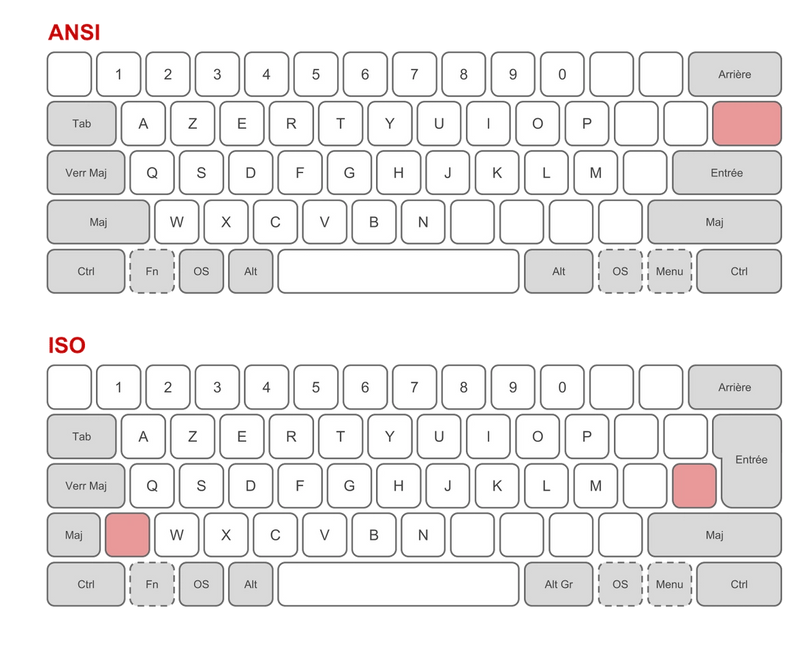
The standard keyboard layout, commonly known as QWERTY, is the most widely used. It's named after the first six letters on the top row of keys. This layout has become the de facto standard and is supported by most software and operating systems. If you're already accustomed to the QWERTY layout, sticking with it may be the most convenient option.
However, alternative layouts like Dvorak or Colemak have gained popularity among those seeking increased typing efficiency and ergonomic benefits. These layouts rearrange the keys to minimize finger movement and promote a more balanced workload between hands. While transitioning to an alternative layout may require an adjustment period, it can potentially improve your typing speed and reduce strain in the long run.
Language-Specific Layouts:
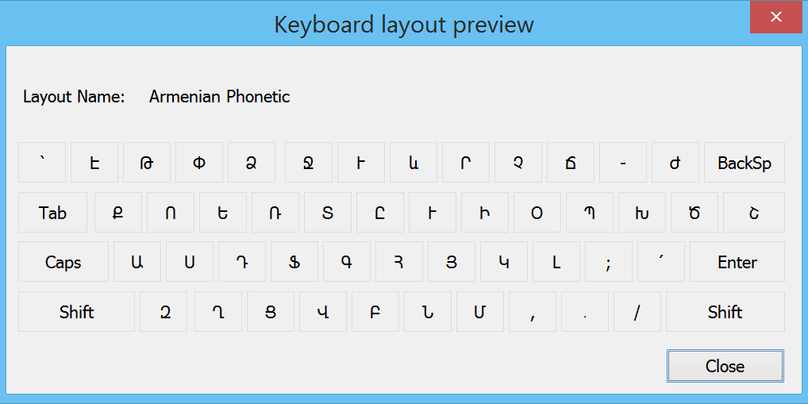
Language-specific layouts are designed to accommodate specific languages' characters and symbols. For example, AZERTY is commonly used in French-speaking regions, while QWERTZ is prevalent in German-speaking countries. If you frequently type in a language other than English, choosing a keyboard with a language-specific layout can greatly enhance your typing experience by providing easier access to language-specific characters.
When considering the keyboard layout, think about your comfort, typing speed, and the languages you frequently use. If you're content with the standard QWERTY layout and mainly type in English, sticking with it might be the most straightforward choice. However, if you're open to exploring alternative layouts or require a specific language layout, it's worth considering the keyboards that offer these options.
Remember, the keyboard layout is a personal preference, and finding the one that suits your needs and enhances your typing efficiency is crucial. Whether you stick with the standard layout or venture into alternative or language-specific layouts, selecting a keyboard that aligns with your preferences will ultimately contribute to a more enjoyable and productive typing experience.
√(b) Connectivity Options
When selecting a keyboard, considering the connectivity options is vital to ensure compatibility and convenience. Let's delve into two key aspects: wired keyboards versus wireless keyboards and the various connectivity options available.
Wired Keyboards vs. Wireless Keyboards:
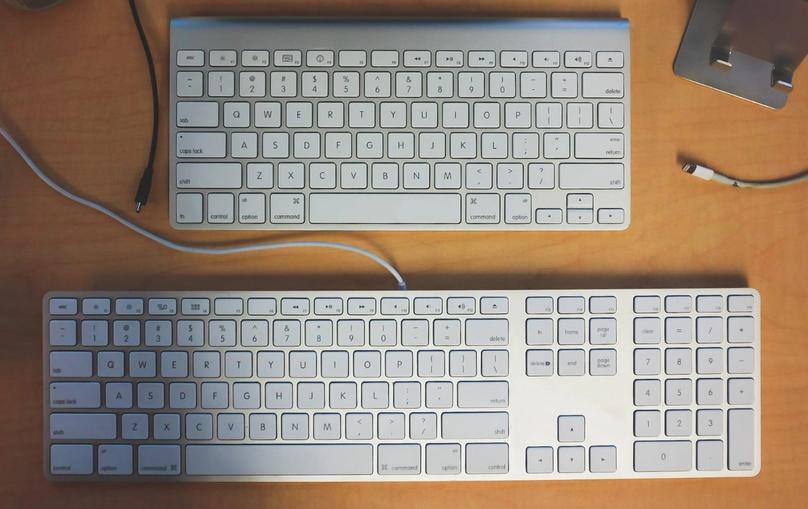
Wired keyboards are connected to your device through a physical cable, typically a USB connection. They offer a reliable and uninterrupted connection, making them ideal for tasks that require minimal latency, such as gaming or professional applications. Wired keyboards also eliminate the need for batteries or charging, ensuring constant functionality.
On the other hand, wireless keyboards provide greater flexibility and mobility. They connect to your device through wireless technologies such as Bluetooth or a USB receiver. Wireless keyboards offer the convenience of typing from a distance or eliminating cable clutter from your workspace. They are particularly beneficial for individuals who prefer a clean, uncluttered desk setup or frequently switch between multiple devices.
Other Connectivity Options:
When it comes to wireless keyboards, it's essential to consider the connectivity options available. Bluetooth and USB are the most common options, each with its advantages.
Bluetooth connectivity allows you to wirelessly connect your keyboard to devices such as laptops, tablets, or smartphones. It offers a seamless and convenient connection without needing a physical receiver. Bluetooth keyboards are often compatible with multiple devices, allowing you to switch between them with a simple pairing process easily.
USB connectivity for wireless keyboards typically involves a USB receiver that plugs into your device's USB port. This method provides a reliable and stable connection, especially when Bluetooth connectivity is limited. USB receivers are usually compact and can be left plugged in or easily stored when not in use.
It's worth noting that some keyboards offer additional connectivity options, such as wireless RF (Radio Frequency) or proprietary connections. These options may provide specific benefits like increased range or reduced interference, but they often require a dedicated receiver or special hardware.
Consider your specific needs regarding convenience, mobility, and device compatibility when choosing between wired and wireless keyboards. Evaluate whether a wired connection's simplicity and reliability or a wireless setup's freedom and flexibility better suit your preferences and usage scenarios.
Ultimately, the choice of connectivity options boils down to your personal preferences and the specific requirements of your setup. Whether you opt for the stability of a wired connection or the convenience of wireless connectivity, selecting a keyboard with the right connectivity option will contribute to a seamless and enjoyable typing experience.
√(c) Keyboard Size and Layout
When choosing a keyboard, considering its size and layout is crucial to ensure a comfortable fit and optimal usability. Let's explore two key aspects: full-size keyboards versus compact layouts and the considerations for available desk space and portability needs.
Full-Size Keyboards vs. Compact Layouts:
Full-size keyboards are the traditional and most common option available. They typically feature a complete set of keys, including the alphanumeric keys, number pad, function keys, and additional navigation and multimedia keys. Full-size keyboards provide ample space for comfortable typing and are ideal for users who require a full range of keys for their tasks, such as data entry or spreadsheet work.
On the other hand, compact layouts offer a more streamlined and space-saving design. These keyboards eliminate or reduce the size of certain sections, such as the number pad or navigation keys, to reduce the overall footprint. Compact layouts are popular among users with limited desk space or those who prefer a minimalist setup. They are also convenient for on-the-go use, fitting easily into laptop bags or backpacks.
Considerations for Available Desk Space and Portability Needs:
When selecting a keyboard size and layout, consider the available desk space and your portability needs.
A full-size keyboard can provide a comfortable and familiar typing experience if you have a spacious desk or workstation. The additional keys and ergonomic spacing may enhance productivity and efficiency for tasks that require extensive typing or numeric input.
However, a compact keyboard layout can be a practical choice if you have limited desk space or prefer a clutter-free workspace. The reduced size frees up valuable space, allowing you to organize your desk more efficiently. Compact keyboards are also ideal for users who frequently travel or work in different locations, as they are lightweight, portable, and easily fit into bags or briefcases.
It's important to strike a balance between your space requirements and your typing needs. Consider the types of tasks you perform most frequently and determine if you can comfortably work with a compact layout without compromising productivity. If you require specific keys, such as a number pad or multimedia controls, ensure that the compact keyboard you choose includes those functions through alternate key combinations or dedicated function keys.
Remember to prioritize your comfort and usability when selecting a keyboard size and layout. Assess your available desk space, portability needs, and the specific tasks you'll be performing to find the ideal balance between functionality and space optimization.
√(d) Some Additional Features
In addition to the essential aspects of a keyboard, several additional features can enhance your typing experience and cater to specific needs. Let's explore three key features: backlighting and customizable lighting effects, multimedia keys and programmable options, and compatibility with operating systems and devices.
√ Backlighting and Customizable Lighting Effects:
Backlighting is a popular feature that provides illumination to the keyboard keys, making it easier to type in low-light environments. It can enhance visibility, reduce eye strain, and add a touch of aesthetic appeal to your setup. Look for keyboards with adjustable backlighting levels, allowing you to customize the brightness according to your preference.
Some keyboards offer advanced lighting effects, such as RGB (Red, Green, Blue) lighting. These keyboards allow you to customize individual key colors, create dynamic lighting patterns, and sync the lighting with other compatible devices. Whether you want a subtle glow or a vibrant display, customizable lighting effects can add a personalized touch to your typing experience.
√ Multimedia Keys, Macro Keys, and Programmable Options:
Multimedia keys provide quick and convenient access to media playback controls, volume adjustment, and other multimedia functions. These dedicated keys save you from navigating through software menus or using complex key combinations, allowing you to control your audio or video playback effortlessly.
Macro keys, also known as programmable keys, offer the ability to assign custom commands or sequences of keystrokes to a single key. This feature is particularly useful for streamlining repetitive tasks or creating shortcuts for complex actions in applications or games. Consider the number and placement of macro keys based on your specific needs.
√ Compatibility with Operating Systems and Devices:
Ensure that the keyboard you choose is compatible with your operating system (OS) and devices. Most keyboards are designed to work seamlessly with popular operating systems like Windows, macOS, or Linux. However, it's essential to double-check compatibility to avoid any potential issues.
For users with multiple devices, look for keyboards that offer compatibility with various platforms, such as computers, laptops, tablets, or smartphones. Some keyboards provide dedicated switching options, allowing you to toggle between different devices with a single keystroke effortlessly.
Before purchasing, check the manufacturer's specifications or product details to confirm compatibility with your specific OS and devices. This ensures a hassle-free experience without the need for additional software or drivers.
By considering these additional features, you can tailor your keyboard to suit your preferences and specific requirements. Whether you prioritize customizable lighting effects, multimedia controls, or compatibility with your devices, these extra features can enhance your typing experience and make your keyboard more versatile and user-friendly.
#3 Testing and Researching Keyboards
Finding the perfect keyboard for your typing needs requires thorough testing and research. Here are some effective strategies to help you make an informed decision:
√ Trying Out Different Keyboards at Physical Stores:
Visiting physical stores specializing in computer peripherals and electronics can be an excellent opportunity to try out different keyboards firsthand. Take advantage of the opportunity to feel the key switches, assess the key travel, and gauge the overall build quality. Typing on the actual keyboards can provide valuable insights into their typing experience and comfort level. Experiment with different layouts, sizes, and key switch types to determine which one suits you best. Physical stores can be an ideal testing ground to get hands-on experience and gather initial impressions.
√ Reading Product Reviews and User Experiences Online:
Online product reviews and user experiences can offer valuable insights into specific keyboard models' performance, durability, and overall satisfaction. Look for reputable technology websites, forums, and user review platforms where people share their experiences. Pay attention to both positive and negative feedback to get a balanced perspective. Consider factors such as build quality, typing experience, reliability, and any potential issues or limitations highlighted by users. This research will help you narrow down your choices and identify keyboards that consistently receive positive feedback.
√ Seeking Recommendations from Trusted Sources and Communities:
Reaching out to trusted sources and communities can provide valuable recommendations and insights. Consult with friends, colleagues, or fellow enthusiasts with firsthand experience with different keyboards. They can offer personal recommendations based on their preferences and requirements. Additionally, join online communities or forums dedicated to keyboards and technology to seek advice and opinions from knowledgeable individuals. Engaging with these communities can provide you with access to a wealth of collective knowledge and expertise, helping you make a more informed decision.
Remember, testing and researching keyboards are essential steps to ensure you find the perfect match for your typing needs. By trying out keyboards at physical stores, reading product reviews and user experiences online, and seeking recommendations from trusted sources and communities, you'll gather valuable information to make a well-informed choice. Don't rush the process—take the time to explore different options and gather insights from various sources to find the keyboard that perfectly aligns with your preferences and requirements.
#4 Budget Considerations

When it comes to choosing a keyboard, budget considerations play a crucial role in the decision-making process. Here are some key points to keep in mind when evaluating the financial aspect:
√ Determining Your Budget Range:

Before diving into the vast array of keyboard options, it's important to determine your budget range. Assess your financial constraints and define the maximum amount you're willing to spend on a keyboard. Establishing a budget range will help narrow down your choices and ensure that you focus on keyboards that are within your price range.
√ Balancing Features, Quality, and Price:
Finding the right balance between features, quality, and price is essential. While opting for the most expensive keyboard with all the bells and whistles is tempting, it's important to consider your specific needs and prioritize accordingly. Identify the key features that are essential for your typing requirements and ensure that the keyboard meets your quality expectations.
Remember that a higher price doesn't always guarantee the best performance or durability. Look for keyboards that balance the features you need and the quality you expect within your budget range. Avoid overpaying for features you may not utilize or compromise on essential qualities for a lower price.
√ Exploring Different Price Segments and Value-for-Money Options:
Keyboards are available across a wide range of price segments, from budget-friendly options to high-end models. Exploring different price segments allows you to compare the features, build quality, and overall value offered by keyboards at various price points.
While budget-friendly keyboards can fulfill basic typing needs, they may lack certain advanced features or premium build materials. On the other hand, higher-priced keyboards may offer additional features, improved key switches, or enhanced durability. Assess the trade-offs and determine which features are crucial for your typing requirements.
Consider value-for-money options that offer a good balance between price and performance. Look for keyboards that provide the necessary features and build quality within your budget range. These keyboards may not have all the premium features of high-end models, but they can still offer a satisfying typing experience without stretching your budget.
By carefully considering your budget range, balancing features, quality, and price, and exploring different price segments, you can find a keyboard that meets your needs without breaking the bank. Remember, the goal is to identify a keyboard that provides the best value for your money, aligns with your requirements, and offers a satisfying typing experience within your budget constraints.
#5 Making an Informed Decision

After considering all the factors and conducting thorough research, it's time to make an informed decision and select the perfect keyboard that suits your typing needs. Here are some essential steps to guide you through the decision-making process:
√ Narrowing Down Options Based on Discussed Factors:
Start by narrowing down your options based on the factors discussed earlier. Consider your typing needs, preferences, ergonomic requirements, connectivity options, keyboard layout, additional features, budget range, and any other specific considerations that are important to you. Eliminate keyboards that don't align with your requirements or fall outside your desired criteria.
By eliminating unsuitable options, you'll have a more manageable selection of keyboards that closely match your needs. This step saves you from feeling overwhelmed by the numerous choices available in the market and allows you to focus on keyboards that have the potential to be the best fit for you.
√ Comparing Keyboards Within Your Preferred Range:
Once you have a narrowed-down list of potential keyboards, it's time to compare them in more detail. Pay close attention to each keyboard's key specifications, features, and user reviews. Look for keyboards that consistently receive positive feedback and have a track record of satisfying users with similar requirements.
Compare the typing experience, build quality, durability, and additional features offered by each keyboard. Assess their compatibility with your operating system and devices. Consider the reputation of the manufacturer and the warranty or customer support provided. Take note of any potential drawbacks or limitations mentioned in user reviews or expert opinions.
√ Weighing Pros and Cons Before Making a Final Choice:
To make a well-informed decision, weighing each keyboard's pros and cons is crucial. Create a list of the advantages and disadvantages associated with each option. Consider the importance of each factor and prioritize based on your individual preferences and requirements.
Evaluate the overall value that each keyboard offers within your preferred price range. Consider the longevity of the keyboard and how well it aligns with your future needs. Take into account any feedback from trusted sources, recommendations, and your own intuition.
By carefully weighing the pros and cons of each keyboard, you can arrive at a final choice that suits your typing needs, preferences, and budget.
Remember, selecting the right keyboard is a personal decision, and what works for one person may not work for another. Trust your instincts and prioritize the factors that matter most to you. By following these steps and making an informed decision, you'll be well on your way to enjoying a typing experience that is comfortable, efficient, and tailored to your needs.
Here are some answers to the questions people ask worldwide related to choosing the right keyboard -
How do I choose a keyboard?
Consider your typing needs, ergonomic requirements, preferred layout, connectivity options, additional features, and budget. Research and compare different keyboards based on these factors before making a decision.
Which type of keyboard is best for typing?
Mechanical keyboards are often considered the best for typing due to their tactile feedback, durable construction, and comfortable key switches.
What are the 7 types of keyboards?
The seven types of keyboards are:
- Standard Keyboard (QWERTY)
- Mechanical Keyboard
- Membrane Keyboard
- Chiclet Keyboard
- Ergonomic Keyboard
- Gaming Keyboard
- Virtual Keyboard
How do I choose a mechanical keyboard?
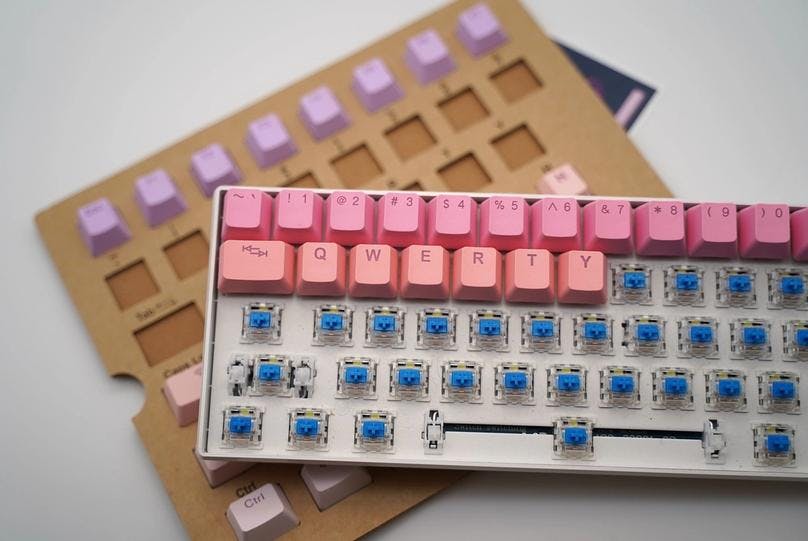
Consider switch type, tactility, actuation force, keyboard size, build quality, additional features, and budget when choosing a mechanical keyboard.
Are 61 keys enough for the keyboard?
Whether 61 keys are enough for a keyboard depends on your specific needs and usage. A 61-key keyboard, commonly known as a 60% keyboard, omits the number pad, function keys, and other additional keys for a more compact form factor.
If you primarily use your keyboard for typing and general tasks, a 61-key keyboard can be sufficient. However, if you rely heavily on the number pad or frequently use function keys for specific applications or gaming, you may find a 61-key keyboard lacking. Consider your specific requirements and determine if the reduced size and functionality of a 61-key keyboard align with your needs.
What is the difference between 61 and 88 keys keyboards?
The difference between a 61-key and an 88-key keyboard is the number of keys. A 61-key keyboard is smaller and lacks the number pad and function keys, making it more portable. An 88-key keyboard is larger and includes a complete set of keys, suitable for musicians and those needing the full range of keys.
Key Takeaways
Choosing the right keyboard is crucial for a comfortable and productive typing experience. By considering factors such as typing needs, layout, connectivity options, additional features, and budget and conducting thorough research, you can make an informed decision. Balancing features, quality, and price while exploring different price segments is key. By weighing the pros and cons, comparing options, and seeking recommendations, you'll find a keyboard that aligns with your preferences and enhances your typing efficiency. Say goodbye to uncomfortable typing and embrace a personalized, efficient, and enjoyable journey with the perfect keyboard tailored just for you.
